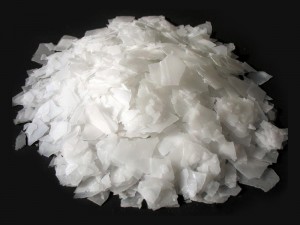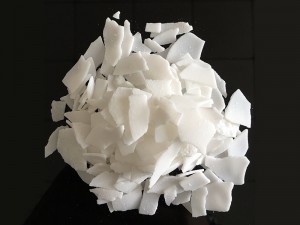P-teroctyl phenol (PTOP) CAS No. 140-66-9
Product description of p-octylphenol
Basic information of p-tertylphenol (PTOP)
Chinese name: p-teroctyl phenol Chinese alias: p-teroctyl phenol; 4-(1,1,3, 3-tetramethylbutyl) phenol; 4-(tertiary octylphenol); 4-tert-octylphenol;
Phenol, 4-(1,1,3,3-tetramethylbutyl)-; tert-octylphenol; 4 - (1,1,3,3 - TetraMethylbutyl) phenol; t-octylphenol; 4 - (2,4,4 Trimethylpentan - 2 - yl) phenol;
Tert-Octylphenol; p-tert-Octylphenol;
English abbreviation: PTOP/POP
CAS No. : 140-66-9
Molecular formula: C14H22O
Molecular weight: 206.32400
Accurate mass: 206.16700 PSA: 20.23000 LogP: 4.10600
Physicochemical property
Appearance and properties: This product is white or white flake solid at room temperature. It is flammable but not flammable, with special alkyl phenol odor. Soluble in alcohol, esters, alkanes, aromatic hydrocarbons and other organic solvents, such as ethanol, acetone, butyl acetate, gasoline, toluene, soluble in strong alkali solution, slightly soluble in water. This product has the common characteristics of phenolic substances, in contact with light, heat, contact with air, color gradually deepened.
Density: 0.935 g/cm3
Melting point: 79-82 °C(lit.)
Boiling point: 175 °C30 mm Hg(lit.)
Flash point: 145 °C
Refractive index: 1.5135 (20oC)
Stability: Stable. Incompatible with strong>Keep in a cool, dry, dark location in a tightly sealed container cylinder. Keep away from incompatible materials, ignition sources untrained individuals. Secure label area. Protect containers/cylinders from physical damage. Ignition sources untrained individuals. Secure label area. Protect containers/cylinders from physical damage.
Vapor pressure: 0.00025mmHg at 25°C
Safety information
Hazard declaration: H315; H318; H410
Warning statement: P280; P305 + P351 + P338 + P310
Packing grade: III
Danger class: 8
Customs Code: 29071300
Dangerous goods transport code: 3077
WGK Germany: 2
Danger class code: R21; R38; R41
Safety Description: S26-S36
RTECS number: SM9625000
Dangerous Goods Mark: Xn
Application
Polycondensation with formaldehyde can produce a variety of octylphenol resin, which is a good viscosifier or vulcanizing agent in rubber industry. Especially the oil soluble octylphenolic resin as viscosifier, widely used in tire, transport belt, etc., is an indispensable processing aid for radial tire;
Non-ionic surfactant octylphenol polyoxyethylene ether was prepared by addition reaction of teroctylphenol and EO, which has excellent levelling, emulsifying, wetting, diffusion, washing, penetration and antistatic properties, and is widely used in industrial and household detergent, daily chemical, textile, pharmaceutical and metal processing industries.
Rosin modified phenolic resin with high molecular weight and low acid value was prepared by the reaction of teroctylphenol with rosin, polyol and formaldehyde. Because of its unique honeycomb structure, it can be well wetted with pigments, and it can react properly with gels to get a certain viscoelastic bonding material, which is widely used in offset printing ink.
UV-329 and UV-360 synthesized with p-teroctyl phenol (POP) as raw materials are excellent and efficient ultraviolet absorbers, which are widely used.
It can also be used to produce binder additives and antioxidants, such as liquid complex stabilizers, polymers, fuel oil and lubricating oil antioxidants and petroleum additives, etc.
use
1. P-teroctyl phenol is the raw material and intermediate of fine chemical industry, such as the synthesis of octyl phenol formaldehyde resin; Widely used in the manufacture of oil-soluble phenolic resins, surfactants, adhesives, etc.
2. Used in the production of octylphenol polyoxyethylene ether and octylphenol formaldehyde resin, also widely used as non-ionic surfactants, textile additives, oilfield additives, antioxidants and rubber vulcanizing agent raw materials;
4. Used in oil additives, ink, cable insulation materials, printing ink, paint, adhesive, light stabilizer and other production fields. Synthesis of nonionic surfactant;
5. Used in detergent, pesticide emulsifier, textile dyeing agent and other products;
6 synthetic rubber additives, is the production of radial tire indispensable additives.
Storage precautions
Packing: Using woven bags lined with plastic bags or hard cardboard bucket packing, each bag net weight 25 kg;
Storage: Store in dry, cool and ventilated room. Keep away from oxidizing agents, strong acids and food, and avoid mixed transportation. The storage period is one year, one year after the quality inspection again before use.
Transportation
Transportation should pay attention to sealing, transportation tools to ensure clean and dry.
Packing method: Plastic bag or two layer kraft paper bag outside full opening or middle opening steel bucket; Frosted glass bottles or threaded glass bottles outside ordinary wooden cases; Thread mouth glass bottle, iron lid pressure mouth glass bottle, plastic bottle or metal bucket (jar) outside ordinary wooden box; Threaded glass bottles, plastic bottles or tinned steel barrels (cans) are covered with plinth box, fiberboard box or plywood box.
Transport precautions: Store in a cool, ventilated warehouse. Keep away from fire and heat. Keep the container sealed. Moisture-proof and sun-proof. It should be stored separately from oxidant, alkali and edible chemical raw materials. Do not smoke, drink or eat on site. When handling, light loading and unloading should be done to prevent damage to packaging and containers. Personal protection should be paid attention to in packing and handling operations.
Emergency treatment
The contaminated area should be isolated, warning signs should be set up around it, and emergency personnel should wear gas masks and chemical protective suits. Do not contact the leakage directly, scrub with the emulsion made of non-combustible dispersant, or absorb with sand, pour to the open place deep buried. The contaminated ground is scrubbed with soap or detergent, and the diluted sewage is put into the waste water system. Such as a large amount of leakage, collection and recycling or harmless disposal after waste.






